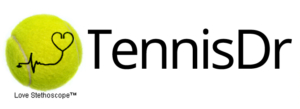On Jul 14, 2010, at 3:18 PM, Cesar wrote:
Good to hear from you. By the way, I would like to resume class, but I do not feel I can improve my skills if I am teamed up with beginners like (Frank, nothing personal about Frank). If there is a chance that you could team me up with one of your 4.0 players, I am interested in resuming class. Otherwise, I am playing regularly at USTA Flex 4.0 and I am rallying with my tennis partner here at BH, Monday thru Friday in the morning.
Best regards,
Cesar
============================
The Academy Style of Coaching
Hey Cesar:
I’m glad to hear that your days are now filled with challenging 4.0 players and plenty of events to test yourself. You have obviously improved tremendously since taking your first lessons with me. Congratulations!
On the other hand, I’m sorry to hear that you FEEL you can’t improve your skills with a particular member of your former class attending. I will consider your request and see what can be done, however, as a long time student of mine who has a better than passive understanding of the sport, you should keep in mind that…
The “Academy Style” of coaching tennis is used at practically every major tennis facility for professional preparation in the world and Division 1 university campus. It’s based on isolating each skill every player needs to improve and does not discriminate by level of ability. Even more so when a ball machine is employed.
For example, on one court the coach works on serve, on another approach shots, on still another angled volleys, etc. When the whistle blows, all students regardless of age or skill, change courts. At an Academy, REAL beginners are usually taught privately to prepare for that rotation that isolates each skill set. At some point, even in football, a scrimmage is held in which the players practice those exact skills under a bit more competitive circumstances, but rarely is a scrimmage “full contact”. For me, the Academy Style, and tennis, the “scrimmage” is a 10 point game.
When it comes to your subjective feelings about your level of ability, BE CAREFUL! The 3.5 and 4.0 levels are notorious for providing delusions about tennis skills. The fact is that Steve W is more skilled and a better athlete than you. Michael O has very similar skills and is a better athlete, and Frank L is SLIGHTLY below your level of tennis skills but also a better athlete in that he is faster around the court.
The question is, does this matter when it comes to playing points at the end of a session in which we have isolated the skills you need to improve for over an hour? NO! In a 10 point game you cannot beat Frank 10-0 and Steve cannot beat you 10-0, but even if that did happen, there are PLENTY of skills that you need to improve during a point that still elude you.
BEWARE: This is the great delusion of ego in our sport! This tennis delusion is much more difficult to observe than in golf in which the conflict is so clearly “the player vs. the course”. The best coaches in our sport have realized something critical for the industry when it comes to helping people improve in tennis…
It’s the ball not the player!
Sincerely,
TennisDr.com
